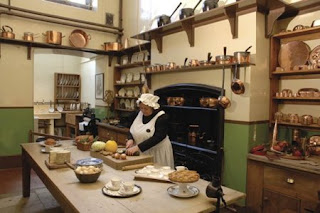I am, unquestionably, the world’s worst texter.
It’s not that I refuse to try new technology; I’m a fan. And I show up on Twitter (@ejcop) and Facebook (E.J. Copperman), and do all the other 21st Century things one is supposed to do.
 I’m not sitting in my 1970 Dodge Dart with the 8-Track player running and wondering why people don’t realize the true artistry of the Bay City Rollers. Not at all. I text, mostly with my daughter, but I do text.
I’m not sitting in my 1970 Dodge Dart with the 8-Track player running and wondering why people don’t realize the true artistry of the Bay City Rollers. Not at all. I text, mostly with my daughter, but I do text.Still, I refuse to conform in one way—I will not mangle the English language. I won’t write “ur” when I mean “you are.” I won’t fail to capitalize a name just because you have to press another key before the letter (don’t we do that on keyboards?). And no matter what the Oxford English Dictionary things, I will not, in any medium, un-ironically write “LOL” or “OMG.” I won’t.
I use words for a living. Words, to paraphrase the immortal Chico Esquela, have been very, very good to me. I think they hold power; they can amuse, uplift, persuade, convince, provoke or galvanize. Words can be weapons or roses; they can be tools or blunt instruments. They can inspire love or rouse the rabble. Words have recently brought change in Egypt and Tunisia. Words fill the Declaration of Independence, the Magna Carta and Mein Kampf.
To turn them into truncated versions of themselves merely to save a few keystrokes and work one’s thumbs less vigorously seems to high a price to pay. I won’t do it.
And so, my daughter (and to be fair anyone who texts with me) has a good chuckle at how long and formal my text messages are—she always says I sound like I’m writing a term paper. I always say she sounds like she’s writing in Estonian.
I teach a writing class at the college level. And every time a new term begins, I have to remind my students that what they will be writing for me will not be text messages. That means “your” and “you’re” have to be used correctly. Punctuation and capitalization will count. “It’s” will only have an apostrophe when contracting the words “it is.”
I’m sure they think I’m a dinosaur, a relic of a different age. Someone whose values are being displaced and obliterated by the onslaught of modern technology. Someone whose opinion on such matters is irrelevant and unimportant.
But then I get to grade them at the end of the term. Those who don’t use proper English in a writing course will see their grades suffer because their usual means of expression comes in 140 characters or less.
This is called “learning a lesson.”
I might be a lousy texter, but I am a really serious advocate for words.
E.J. Copperman is the author of AN UNINVITED GHOST, the second in the Haunted Guesthouse Mystery series from Berkley, which was published April 5. This tale of sand, surf, murder, reality TV and ghosts follows NIGHT OF THE LIVING DEED, which began the series last year.






































